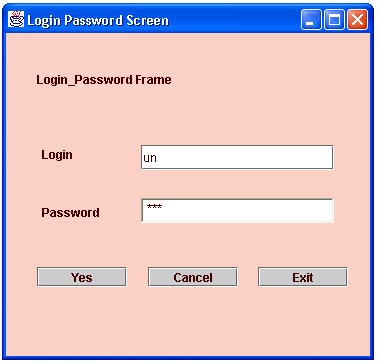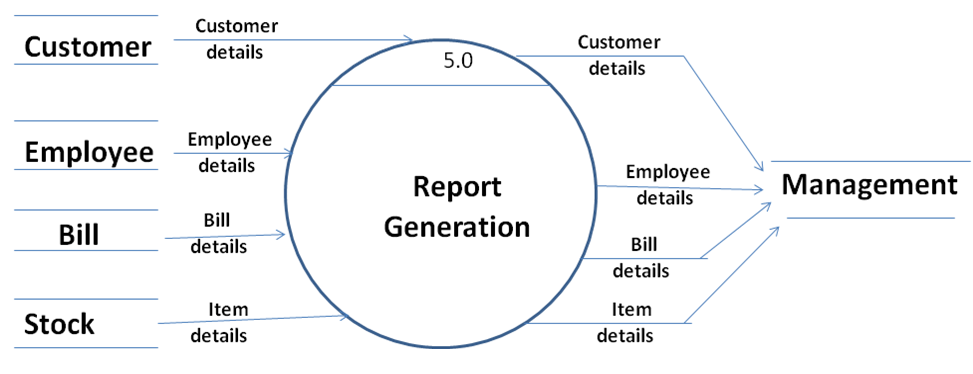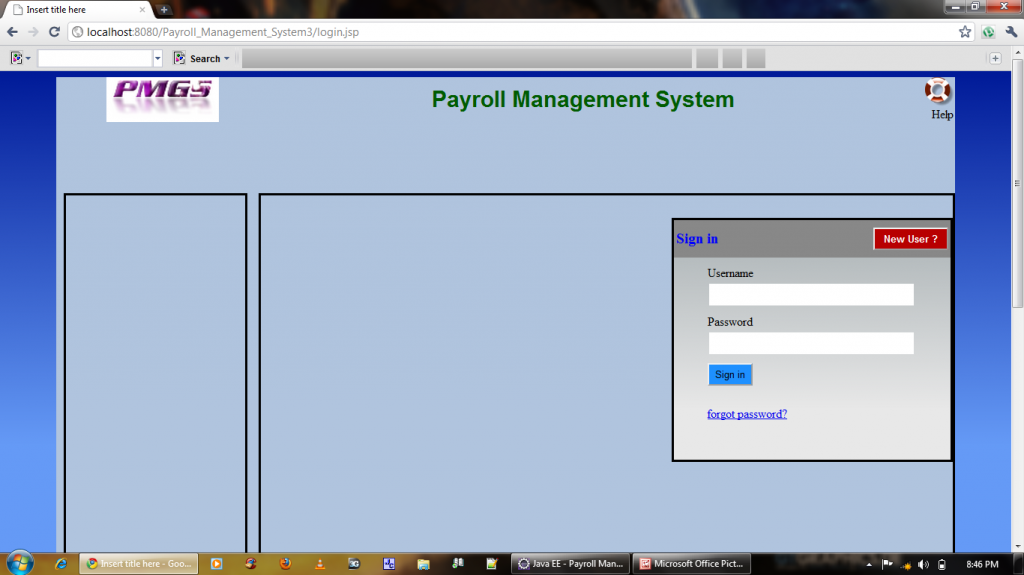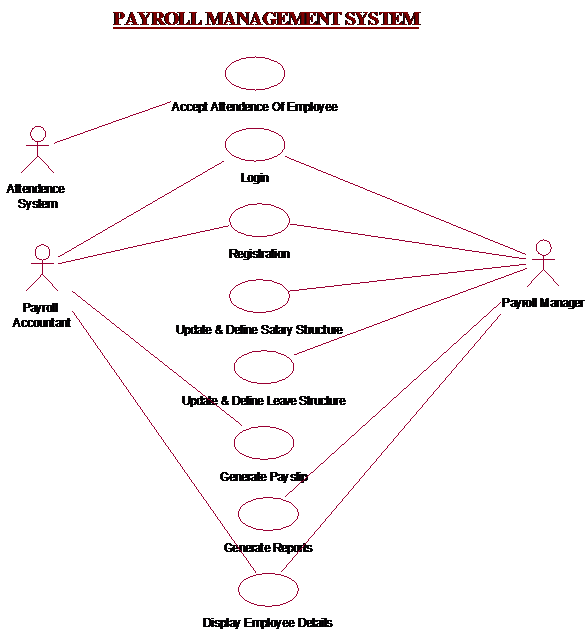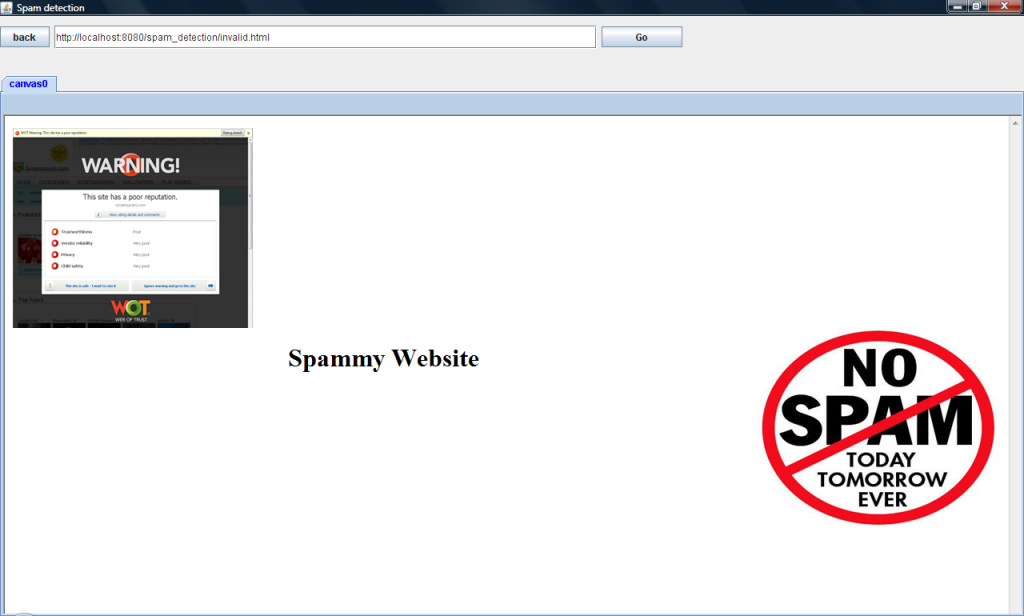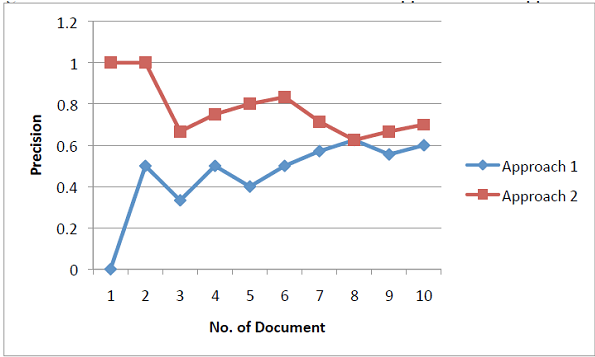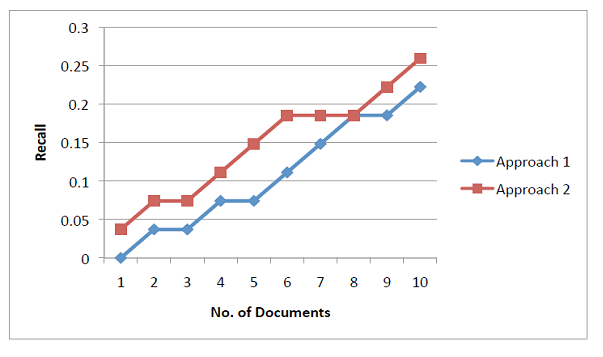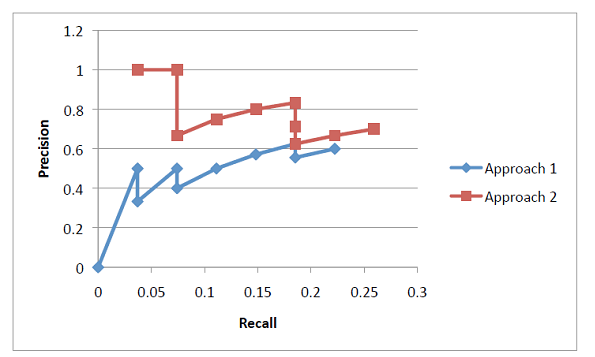|
S. No
|
All Project Titles
|
Year |
|
Cloud Computing |
|
| 1 |
Oruta: Privacy-Preserving Public Auditing for Shared Data in the Cloud |
2014 |
| 2 |
NCCloud: A Network Coding Based Storage System in a Cloud-of-Clouds |
2014 |
| 3 |
Enabling Data Integrity Protection in Regenerating-Coding-Based Cloud Storage: Theory and Implementation |
2014 |
| 4 |
Key-Aggregate Cryptosystem for Scalable Data Sharing in Cloud Storage |
2014 |
| 5 |
Privacy Preserving Multi keyword Ranked Search over Encrypted Cloud Data |
2014 |
| 6 |
Decentralized Access Control with Anonymous Authentication of Data Stored in Clouds |
2014 |
| 7 |
Building Confidential and Efficient Query Services in the Cloud with RASP Data Perturbation |
2014 |
| 8 |
Panda: Public Auditing for Shared Data with Efficient User Revocation in the Cloud. |
2014 |
| 9 |
Innovative Schemes for Resource Allocation in the Cloud for Media Streaming Applications |
2014 |
| 10 |
Cloud Assisted Mobile Access of Health Data With Privacy and Audit ability |
2014 |
| 11 |
Shared Authority Based Privacy-preserving Authentication Protocol in Cloud Computing |
2014 |
| 12 |
Optimal Power Allocation and Load Distribution for Multiple Heterogeneous Multi core Server Processors across Clouds and Data Centers |
2014 |
| 13 |
PACK: Prediction-Based Cloud Bandwidth and Cost Reduction System |
2014 |
| 14 |
A Stochastic Model to Investigate Data Center Performance and QoS in IaaS Cloud Computing Systems |
2014 |
| 15 |
Towards Differential Query Services in Cost Efficient Clouds |
2014 |
| 16 |
An Efficient and Trustworthy Resource Sharing Platform for Collaborative Cloud Computing |
2014 |
| 17 |
A Hybrid Cloud Approach for Secure Authorized De duplication |
2014 |
| 18 |
Distributed, Concurrent, and Independent Access to Encrypted Cloud Databases |
2014 |
| 19 |
On the Knowledge Soundness of a Cooperative Provable Data Possession Scheme in Multi cloud Storage |
2014 |
| 20 |
Identity Based Distributed Provable Data Possession in Multi-Cloud Storage |
2014 |
| 21 |
Consistency as a Service Auditing :Cloud Consistency |
2014 |
| 22 |
A Social Compute Cloud: Allocating and Sharing Infrastructure Resources via Social Networks |
2014 |
| 23 |
Scalable Distributed Service Integrity Attestation for Software-as-a-Service Clouds. |
2014 |
| 24 |
Expressive, Efficient, and Revocable Data Access Control for Multi-Authority Cloud Storage |
2014 |
| 25 |
Secure kNN Query Processing in Un trusted Cloud Environments |
2014 |
| 26 |
A Mechanism Design Approach to Resource Procurement in Cloud Computing |
2014 |
| 27 |
A Secure Client Side De duplication Scheme in Cloud Storage Environments |
2014 |
| 28 |
Balancing Performance Accuracy and Precision for Secure Cloud Transactions |
2014 |
| 29 |
Performance and cost evaluation of an adaptive encryption architecture for cloud databases |
2014 |
| 30 |
Securing the cloud storage audit service: defending against frame and collude attacks of third party auditor |
2014 |
| |
|
|
| |
Network Security |
|
| |
|
|
| 1 |
Behavioral Malware Detection in Delay Tolerant Networks |
2014 |
| 2 |
A System for Denial-of-Service Attack Detection Based on Multivariate Correlation Analysis |
2014 |
| 3 |
Secure Deduplication with Efficient and Reliable Convergent Key Management |
2014 |
| 4 |
Building a Scalable System for Stealthy P2P-Botnet Detection |
2014 |
| 5 |
An Error Minimizing Framework for Localizing Jammers in Wireless Networks |
2014 |
| 6 |
Securing Broker Less Publish Subscribe Systems Using Identity-Based Encryption |
2014 |
| 7 |
Bandwidth Distributed Denial of Service: Attacks and Defenses |
2014 |
| 8 |
E-MACs: Toward More Secure and More Efficient Constructions of Secure Channels. |
2014 |
| 9 |
Secure Data Retrieval for Decentralized Disruption-Tolerant Military Networks |
2014 |
| 10 |
Captcha as Graphical Passwords—A New Security Primitive Based on Hard AI Problems |
2014 |
| 11 |
Efficient and Privacy-Aware Data Aggregation in Mobile Sensing |
2014 |
| 12 |
PROFILR: Toward Preserving Privacy and Functionality in Geo Social Networks Nodes |
2014 |
| 13 |
Privacy-Preserving Optimal Meeting Location Determination on Mobile Devices |
2014 |
| |
|
|
| |
Ad hoc Networks & VANET & MANET |
|
| |
|
|
| 1 |
Optimal Multicast Capacity and Delay Tradeoffs in MANETs |
2014 |
| 2 |
STARS: A Statistical Traffic Pattern Discovery System for MANETs |
2014 |
| 3 |
Trajectory Improves Data Delivery in Urban Vehicular Networks |
2014 |
| 4 |
Energy Efficient Reliable Routing Considering Residual Energy in Wireless Ad Hoc Networks |
2014 |
| 5 |
VSPN: VANET-Based Secure and Privacy-Preserving Navigation |
2014 |
| 6 |
Efficient Data Query in Intermittently-Connected Mobile Ad Hoc Social Networks |
2014 |
| 7 |
Multicast Capacity in MANET with Infrastructure Support |
2014 |
| 8 |
Leveraging Social Networks for P2P Content-Based File Sharing in Disconnected MANETs |
2014 |
| 9 |
AASR: An Authenticated Anonymous Secure Routing Protocol for MANETs in Adversarial Environment |
2014 |
| 10 |
PSR: A Lightweight Proactive Source Routing Protocol For Mobile Ad Hoc Networks |
2014 |
| 11 |
Defending Against Collaborative Attacks by Malicious Nodes in MANETs: A Cooperative Bait Detection Approach |
2014 |
| 12 |
Message Authentication Using Proxy Vehicles in Vehicular Ad Hoc Networks |
2014 |
| 13 |
Optimized Multicast Routing Algorithm Based on Tree Structure in MANETs |
2014 |
| |
|
|
| |
Mobile Computing |
|
| |
|
|
| 1 |
Efficient and Privacy-Aware Data Aggregation in Mobile Sensing |
2014 |
| 2 |
Cooperative Caching for Efficient Data Access in Disruption Tolerant Networks |
2014 |
| 3 |
A QoS-Oriented Distributed Routing Protocol for Hybrid Wireless Networks |
2014 |
| 4 |
Efficient Authentication for Mobile and Pervasive Computing |
2014 |
| 5 |
Friend book: A Semantic-based Friend Recommendation System for Social Networks |
2014 |
| 6 |
Preserving Location Privacy in Geo Social Applications |
2014 |
| 7 |
Privacy-Preserving Optimal Meeting Location Determination on Mobile Devices |
2014 |
| 8 |
Video Dissemination over Hybrid Cellular and Ad Hoc Networks |
2014 |
| |
|
|
| |
Wireless Sensor Networks |
|
| |
|
|
| 1 |
Secure and Efficient Data Transmission for Cluster-based Wireless Sensor Networks |
2014 |
| 2 |
An Error Minimizing Framework for Localizing Jammers in Wireless Networks |
2014 |
| 3 |
A Survey of Intrusion Detection Systems in Wireless Sensor Networks |
2014 |
| 4 |
QoS Aware Geographic Opportunistic Routing in Wireless Sensor Networks |
2014 |
| 5 |
Link Quality Aware Code Dissemination in Wireless Sensor Networks |
2014 |
| 6 |
Hop-by-Hop Message Authentication and Source Privacy in Wireless Sensor Networks |
2014 |
| 7 |
ALBAR Load-Balancing Geographic Routing Around Connectivity Holes in Wireless Sensor Networks |
2014 |
| 8 |
Secure Continuous Aggregation in Wireless Sensor Networks |
2014 |
| 9 |
Snapshot and Continuous Data Collection in Probabilistic Wireless Sensor Networks. |
2014 |
| 10 |
Top-k Query Result Completeness Verification in Tiered Sensor Networks |
2014 |
| 11 |
Transmission-Efficient Clustering Method for Wireless Sensor Networks Using Compressive Sensing |
2014 |
| 12 |
Data Density Correlation Degree Clustering Method for Data Aggregation in WSN |
2014 |
| 13 |
An Energy-Balanced Routing Method Based on Forward-Aware Factor for Wireless Sensor Networks |
2014 |
| 14 |
Constructing Load-Balanced Data Aggregation Trees in Probabilistic Wireless Sensor Networks |
2014 |
| 15 |
Secure Data Aggregation in Wireless Sensor Networks: Filtering out the Attacker’s Impact |
2014 |
| |
|
|
| |
Android Projects |
|
| |
|
|
| 1 |
Friend book: A Semantic-based Friend Recommendation System for Social Networks |
2014 |
| 2 |
Innovative Schemes for Resource Allocation in the Cloud for Media Streaming Applications |
2014 |
| 3 |
Privacy-Preserving Optimal Meeting Location Determination on Mobile Devices |
2014 |
| 4 |
Efficient Authentication for Mobile and Pervasive Computing |
2014 |
| 5 |
Smart DC Mobility Prediction-based Adaptive Duty Cycling for Everyday Location Monitoring |
2014 |
| 6 |
LocaWard A Security and Privacy Aware Location-Based Rewarding System |
2014 |
| 7 |
Enabling Trustworthy Service Evaluation in Service-Oriented Mobile Social Networks |
2014 |
| 8 |
Discovering Emerging Topics in Social Streams via Link-Anomaly |
2014 |
| 9 |
Cooperative Positioning and Tracking in Disruption Tolerant Networks |
2014 |
| 10 |
MOSES: Supporting and Enforcing Security Profiles on Smart phones |
2014 |
| 11 |
Certificateless Remote Anonymous Authentication Schemes for Wireless Body Area Networks |
2014 |
| 12 |
SOS A Distributed Mobile Q&A System Based on Social Networks |
2014 |
| 13 |
A Real-Time Adaptive Algorithm for Video Streaming over Multiple Wireless Access Networks |
2014 |
| 14 |
Improving Fairness, Efficiency, and Stability in HTTP-Based Adaptive Video Streaming With Festive |
2014 |
| 16 |
Android College Campus |
2014 |
| |
|
|
| |
Data Mining |
|
| |
|
|
| 1 |
Fast Nearest Neighbor Search with Keywords |
2014 |
| 2 |
An Empirical Performance Evaluation of Relational Keyword Search Systems |
2014 |
| 3 |
Facilitating Document Annotation using Content and Querying Value |
2014 |
| 4 |
Supporting Privacy Protection in Personalized Web Search |
2014 |
| 5 |
Secure Mining of Association Rules in Horizontally Distributed Databases |
2014 |
| 6 |
Efficient Ranking on Entity Graphs with Personalized Relationships |
2014 |
| 7 |
SOS: A Distributed Mobile Q&A System Based on Social Networks |
2014 |
| 8 |
Privacy-Preserving and Content-Protecting Location Based Queries |
2014 |
| 9 |
Discovering Emerging Topics in Social Streams via Link-Anomaly |
2014 |
| 10 |
Security Evaluation of Pattern Classifiers under Attack |
2014 |
| 11 |
LARS An Efficient and Scalable Location-Aware Recommender System |
2014 |
| 12 |
Privacy-Preserving Authenticated Key-Exchange Over Internet. |
2014 |
| 13 |
Accuracy Constrained Privacy-Preserving Access Control Mechanism for Relational Data |
2014 |
| 14 |
Efficient Instant-Fuzzy Search with Proximity Ranking |
2014 |
| 15 |
Efficient Prediction of Difficult Keyword Queries over Databases |
2014 |
| 16 |
Temporal Workload-Aware Replicated Partitioning for Social Networks |
2014 |
| 17 |
Best Peer++: A Peer-to-Peer Based Large-Scale Data Processing Platform |
2014 |
| 18 |
Trusted DB: A Trusted Hardware-Based Database with Privacy and Data Confidentiality |
2014 |
| 19 |
Distributed Web Systems Performance Forecasting Using Turning Bands Method |
2014 |
| 20 |
Distributed Processing of Probabilistic Top-k Queries in Wireless Sensor Networks |
2014 |
| |
|
|
| |
Networking and Wireless Communication |
|
| 1 |
A Probabilistic Misbehavior Detection Scheme toward Efficient Trust Establishment in Delay-Tolerant Networks |
2014 |
| 2 |
Secure Data Retrieval for Decentralized Disruption-Tolerant Military Networks |
2014 |
| 3 |
Cooperation Versus Multiplexing: Multicast Scheduling Algorithms for OFDMA Relay Networks |
2014 |
| 4 |
Traffic Pattern Based Content Leakage Detection for Trusted Content Delivery Networks |
2014 |
| 5 |
Cost-Effective Resource Allocation of Overlay Routing Relay Nodes |
2014 |
| 6 |
Automatic Test Packet Generation |
2014 |
| 7 |
HALO: Hop-by-Hop Adaptive Link-State Optimal Routing |
2014 |
| 8 |
A Two stage Deanonymization Attack Against Anonymized Social Networks |
2014 |
| 9 |
Cross-Layer Design of Congestion Control and Power Control in Fast-Fading Wireless Networks |
2014 |
| |
|
|
| |
Image Processing and Multimedia |
|
| |
|
|
| 1 |
Web Image Re-Ranking Using Query-Specific Semantic Signatures |
2014 |
| 2 |
Click Prediction for Web Image Re ranking Using Multimodal Sparse Coding |
2014 |
| 3 |
Captcha as Graphical Passwords—A New Security Primitive Based on Hard AI Problems |
2014 |
| 4 |
Learning and Recognition of On-Premise Signs from Weakly Labeled Street View Images |
2014 |
| 5 |
Personalized Geo-Specific Tag Recommendation for Photos on Social Websites |
2014 |
| 6 |
Multi sensor Fusion-Based Concurrent Environment Mapping and Moving Object Detection for Intelligent Service Robotics (Dot Net) |
2014 |
| 7 |
Sharing Visual Secrets in Single Image Random Dot Stereograms (Dot Net) |
2014 |
| 8 |
Feature Match: A General ANNF Estimation Technique and its Applications (Dot Net) |
2014 |
| |
|
|
| |
J2ME Mobile Based Projects |
|
| |
|
|
| 1 |
Adaptation of a virtual campus for mobile learning devices |
2014 |
| 2 |
Bluetooth Mobile Based College Campus |
2014 |
| 3 |
ECops via Handheld Mobile Devices |
2014 |
| 4 |
Privacy-Conscious Location-Based Queries in Mobile Environments |
2014 |
| 5 |
Ranking Model Adaptation for Domain-Specific Search |
2014 |
| 6 |
SPOC A Secure and Privacy-preserving Opportunistic Computing Framework For Mobile-Healthcare Emergency |
2014 |
| 7 |
The Word in a nut shell : CONCISE RANGE QUERIES |
2014 |
| |
Parallel and Distributed System |
|
| |
|
|
| 1 |
Enabling Trustworthy Service Evaluation in Service-Oriented Mobile Social Networks |
2014 |
| 2 |
Exploiting Service Similarity for Privacy in Location-Based Search Queries |
2014 |
| 3 |
LocaWard: A Security and Privacy Aware Location-Based Rewarding System |
2014 |
| 4 |
On False Data-Injection Attacks against Power System State Estimation: Modeling and Countermeasures |
2014 |
| 5 |
Traffic Pattern-Based Content Leakage Detection for Trusted Content Delivery Networks |
2014 |
| 6 |
Cooperative Caching for Efficient Data Access in Disruption Tolerant Networks |
2014 |
| 7 |
SOS: A Distributed Mobile Q&A System Based on Social Networks |
2014 |
| 8 |
Certificateless Remote Anonymous Authentication Schemes for Wireless Body Area Networks |
2014 |
| 9 |
Secure and Efficient Data Transmission for Cluster-based Wireless Sensor Networks |
2014 |
| 10 |
Secure Deduplication with Efficient and Reliable Convergent Key Management |
2014 |
| |
|
|

